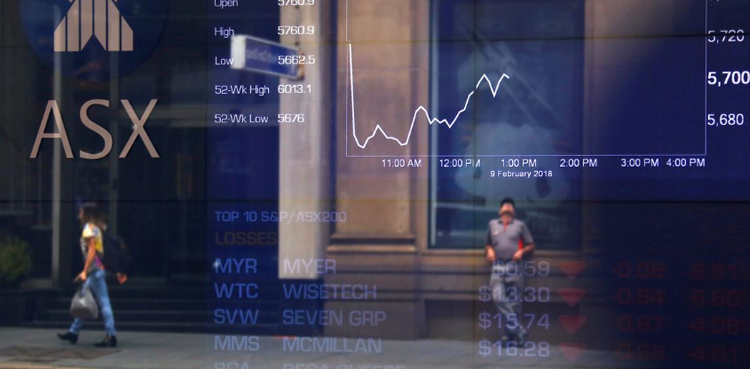LONDON: US stock futures looked to open a few ticks higher, while the dollar steadied at the start of a week which includes a Bank of Japan policy announcement and a key reading on U.S. inflation.
Iranian-backed Houthi militants have stepped up attacks on vessels in the Red Sea which on Monday pushed up shares in big shipping companies, particularly in Europe, on the view that they may increase their rates in response. Oil prices rose.
MSCI’s broadest index of world shares dipped 0.1%. S&P 500 futures inched up 0.2%, while Nasdaq futures added 0.1%.
The pan-European stock index traded largely flat by 1225 GMT, after its fifth straight weekly gain on Friday, its longest streak since April.
Maersk shares rose as much as 4.7% in Copenhagen, before paring some of those gains, and following an almost 8% surge on Friday. By 1225 GMT, Italian shipper D’Amico, Germany’s Hapag Lloyd and Norwegian oil tanker Hafnia gained between 4% and 6%, also extending last week’s surge.
Oil rose as the attacks on ships in the Red Sea raised concerns of oil supply disruptions, although scepticism around Russia’s plan to cut exports in December limited gains.
Brent rose 59 cents to $77.14 a barrel, while U.S. crude rose 43 cents to $71.86 by 1230 GMT.
Florian Ielpo, head of macro at Lombard Odier Investment Managers, said that in recent days he had seen less market reaction to macro economic data and more moves in stock and bond markets after remarks made by central bank policy makers.
“We will see this week, genuinely, how the market digests a Fed pivot,” said Ielpo who noted that so far, stocks had risen and credit spreads widened, with a growing difference between corporate and sovereign bond yields with the same maturity.
The Bank of Japan’s policy decision on Tuesday will likely be the main event in Asia this week. April was favoured by 17 of 28 economists as the kick-off for negative rates to be scrapped, making the BOJ one of the few central banks in the world actually tightening.
December would be early for a policy shift said John Briggs, global head of economics and markets strategy at NatWest.
“Still, we continue to watch for any language that could be any hint for a sooner policy shift, particularly around Ueda’s ‘second force’ of service wages becoming more embedded in behavior and inflation,” said Briggs in a research note.
None of the analysts polled by Reuters expected a definitive move at this week’s meeting, but policymakers might start laying the groundwork for an eventual shift.
South Korea’s main index closed 0.3% higher (.KS11), showing no obvious reaction to reports North Korea had fired a ballistic missile off its east coast.
In the United States, a reading on core personal consumption expenditure (PCE) index due on Friday is forecast by analysts to rise 0.2% in November with the annual inflation rate slowing to its lowest since mid-2021 at 3.4%, according to economists polled by Reuters.
Analysts suspect the balance of risk is tilted to the downside and a rise of 0.1% for the month would see the six-month annualised pace of inflation slow to just 2.1% and almost at the Federal Reserve’s target of 2%.
Markets reckon the slowdown in inflation means the Fed will have to ease policy just to stop real rates from rising, and are wagering on early and aggressive action.
New York Fed President John Williams did try to temper some of these expectations on Friday by saying there was no talk of easing by policy makers, but markets shrugged off his remarks.
MARCH MADNESS
Two-year Treasury yields edged up only slightly in response, trading around 4.43%, the lowest since May.
Yields on 10-year notes stood at 3.90%, having dived 33 basis points last week in the biggest weekly fall since early 2020.
Fed fund futures imply a 74% chance of a rate cut as early as March, while May has 39 basis points (bp) of easing priced in. The market also implies at least 140 basis points of cuts for all of 2024.
Analysts at Goldman Sachs said a client note they expect five cuts in 2024 and three more cuts in 2025.
The market’s dovish outlook for U.S. rates saw the dollar slip 0.2% against a basket of currencies , though the Fed is hardly alone in the rate-cutting stakes.
Markets imply around 150 basis points of easing by the European Central Bank next year, and 113 basis points of cuts from the Bank of England. ,
That outlook supported the euro at $1.0915 , having pulled back from a top of $1.1004 on Friday. The dollar was looking more vulnerable against the yen at 142.78 , having slid 1.9% last week.
The drop in the dollar and yields should be positive for gold at $2,022 an ounce , though that was short of its recent all-time peak of $2,135.40.



Leave a Comment